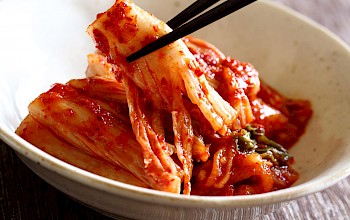Cornstarch: Calories and Nutrition Analyse
How many calories in cornstarch?

Nutrition Facts
CornstarchServing size:
tablespoon of cornstarch (8 g) change
5g10g15g20g30g40g50g60g80g100g120g140g160g180g200g220g250g300g350g400g450g500g600g700g800g900g1000g
1oz2oz3oz4oz5oz6oz7oz8oz10oz12oz15oz20oz25oz30oz35oz40oz50oz
Amount Per Serving:
100g of cornstarch contain about 381 calories (kcal).
Calories per:
ounce
| tablespoon
| teaspoon
| cup
| half cup
Case in point, a tablespoon of cornstarch (8 g) contain about 30 calories.
This is about 2% of the daily caloric intake for an average adult with medium weight and activity level (assuming a 2000 kcal daily intake).
Scroll down for details and nutrition tables.
To visualize how much 30 kcal actually is, keep in mind that the calorie content of tablespoon of cornstarch is similar to that of, for example:
- 0.5 apple
- 1.5 cubes of sugar
Take a quick look at the tables below for detailed information about cornstarch nutrition.
100g of Cornstarch
Nutrition
- Calories381
- Carbs Total91.27 g
- Dietary fiber0.9 g
- Fat0.05 g
- Protein0.26 g
- Water8.32 g
Vitamins
Minerals
- Potassium3 mg
- Magnessium3 mg
- Calcium2 mg
- Sodium9 mg
- Iron0.47 mg
Unveiling the Nutritional Profile of Cornstarch: A Closer Look
Often hidden in the shadows of the culinary world, cornstarch is a staple in many kitchens, revered for its thickening prowess. Beyond its culinary uses, the nutritional aspects of cornstarch are worth exploring. This fine, powdery substance, derived from the endosperm of corn kernels, holds a simple yet intriguing nutritional profile that can play a role in various dietary needs.
Caloric Content: A Dense Source of Energy
With 381 calories per 100 grams, cornstarch is a high-energy food. This makes it an efficient source of quick energy, ideal for those needing a calorie-dense option. However, for individuals watching their calorie intake or managing weight, moderation is key.
Carbohydrates Galore
Carbohydrates are the primary macronutrient in cornstarch, boasting a substantial 91.27 grams per 100 grams. The presence of 0.9 grams of dietary fiber also contributes to its nutritional value, although minimally. This high carb content positions cornstarch as an excellent thickener but also means it should be consumed judiciously, especially by those on low-carb diets.
Minimal Fat and Protein
When it comes to fat and protein, cornstarch offers negligible amounts. With only 0.05 grams of fat and 0.26 grams of protein per 100 grams, it's clear that cornstarch won't meet your needs if you're looking for these macronutrients. However, its low fat content can be advantageous for those seeking to minimize fat intake.
Micro-nutrient Spectrum
Though not a powerhouse of vitamins and minerals, cornstarch contains trace amounts of essential nutrients. It provides a small amount of iron (0.47 mg) and magnesium (3 mg), alongside minimal quantities of calcium, potassium, and sodium. While these amounts are not significant to fulfill daily requirements, they add a slight nutritional bonus to its profile.
Gluten-Free and Low in Cholesterol
For individuals with gluten sensitivities or celiac disease, cornstarch is a safe and useful culinary ingredient, being naturally gluten-free. Additionally, its zero cholesterol content makes it a heart-friendly choice, especially for those managing cholesterol levels.
Integrating Cornstarch into a Healthy Diet
While cornstarch is not a nutrient-dense food, its role in a balanced diet cannot be understated. It's an excellent thickening agent for sauces, soups, and gravies, adding texture without overpowering other flavors. However, due to its high calorie and carb content, portion control is essential. Integrating cornstarch into a diet that also includes a variety of whole foods can ensure you're not missing out on essential nutrients.
In conclusion, cornstarch offers more than just culinary benefits. Its nutritional profile, characterized by high calories and carbs but low in fat and protein, makes it a unique ingredient suitable for specific dietary needs. Whether you're using it in cooking or as a dietary supplement, understanding the cornstarch nutrition facts can help you make informed choices about incorporating it into your meals.
How many calories are there in 1, 2, 3, or 5 servings of cornstarch?
- Tablespoon of cornstarch (8g)30 kcal
- Teaspoon of cornstarch (3g)11 kcal
- Cup of cornstarch (128g)488 kcal
- Half cup of cornstarch (64g)244 kcal
- Ounce (oz) of cornstarch108 kcal
- Half of medium size servings of cornstarch15 kcal
- Small size serving of cornstarch (6g)24 kcal
- Big size cornstarch (10g)39 kcal
- Two medium size servings of cornstarch60 kcal
- Three medium size servings of cornstarch90 kcal
- Four medium size servings of cornstarch120 kcal
- Five medium size servings of cornstarch150 kcal

Similar calories number have:
See also:
Read this:
- How many calories does wonton soup have?
- Calories in a half of peanut butter and jelly sandwich
- Calories in whole peanut butter and jelly sandwich
- Calories for one, two or more peanut butter and jelly sandwiches
- How many carbs (carbohydrates) in brown rice flour?
- How much fat in buttercup squash?
- How much protein in stewed potatoes?
- What is weight of fried canadian bacon?
- Roasted peanuts calories per ounce (oz)
- Dried banana chips calories per serving size



Add comment